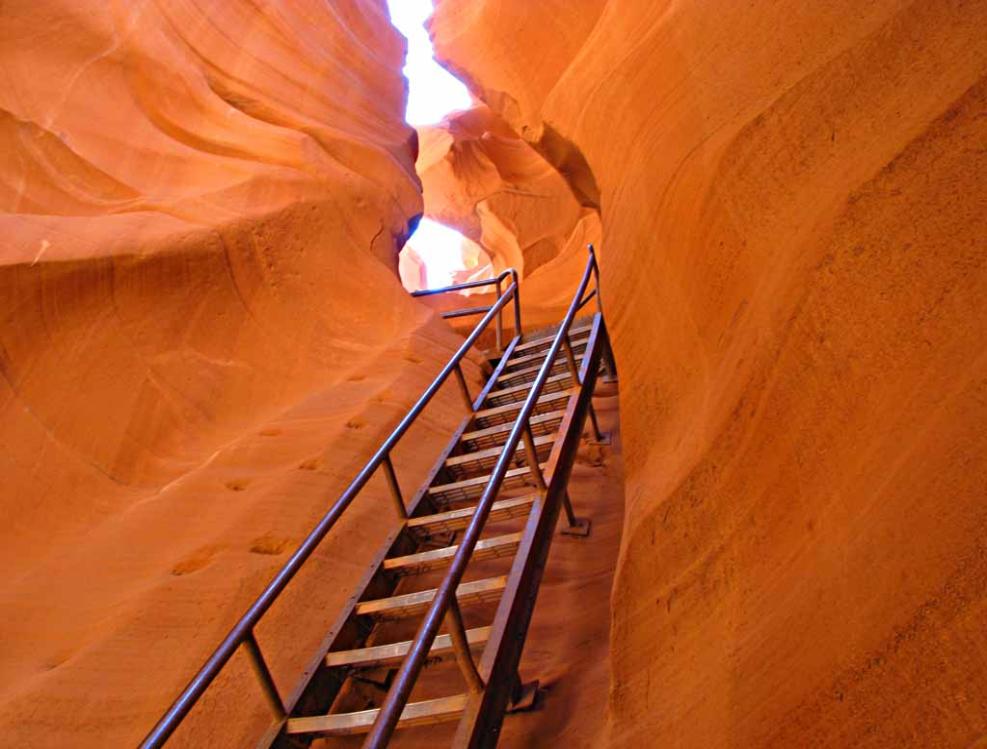Antelope Canyon is the glaring example of what nature can create over a time period with its power of wear and tear, using none of the tools that an expert artisan uses to chisel out his work of art. On their visit to this charismatic marvel, travelers discover a secluded art gallery that has gradually been curved out of the surface of earth and still being decorated with the artworks created over a period of time.

image source: garyyost.com
Antelope Canyon is among the most frequently visited and photographed slot canyons in the world. This beautiful tourist attraction of the Southwest America is located at the Navajo land in Arizona. This canyon is divided into two distinctly separate sections of The Crack or The Upper Antelope Canyon and The Corkscrew or The Lower Antelope Canyon.
The Navajos had plans to turn the name of Upper Antelope Canyon almost into a tongue twister. It is Tse bighanilini or “the rocky place through which water runs”. The Lower Antelope Canyon is known as Hazdistazi in Navajo. This part of the canyon is also known as “spiral rock arches”. The marvel of this huge canyon is nestled almost hidden from the public eye as the Arizona landscape keeps it wrapped inside its crevasses. The serenity of this splendid Arizona wonder will compel you to hush up without having much reason to do so. The upper canyon is more frequently visited compared to the lower part of it. The main reason behind it is the more difficult hiking inside the Lower Antelope and the fact that it needs to be reached through a metal stairway.
Lower Antelope Canyon: The Lower Antelope is quite deep and so narrow that an adult person can touch the walls on both sides while going through the pathway. Difference in the width of the canyon at different parts or the steep depth depends largely on the flow of water that ran through sandstone. From time immemorial, flash flood has crafted this unique land formation, bit by bit. Flash floods still occur, may be less frequently than it happened earlier and Antelope canyon is under the process of continuous regeneration.

Upper Antelope Canyon: There is reason enough for this more beautiful part between the two Navajo canyons being more popular among the tourists worldwide. This one is on the ground level and a few occasional rays of the sun often illuminate the well-smoothed curves of the canyon wall to impart ethereal beauty to it. During summer, a few bright beams manage to find their way down to the canyon floor and create the perfect effect that could always be a photographer’s dream.
Creation of the Canyon: It took nature around thousand years to craft this marvelous rock formation with the help of gushing water flowing through the rocks. It seems that the Navajo landscape is still not contented with what it has to attract travelers from all around the globe and leave them bemused with the spell binding play of light in every nook and corner of the canyon. During monsoon, rainwater gets accumulated in a large basin from which it picks up speed while rushing through the narrow passage of the slot canyon. With the approach of every monsoon, the gushing flow rubs all the corners and edges on the canyon walls to perfection, creating exquisite shapes and fine etches to enhance the beauty of this unique artwork crafted in nature’s own hand.
![]()





